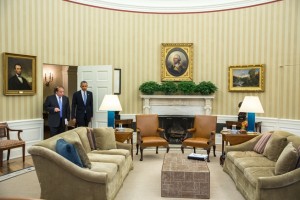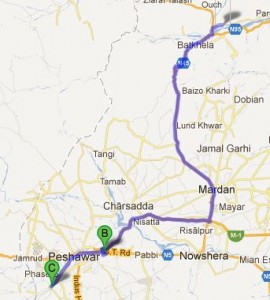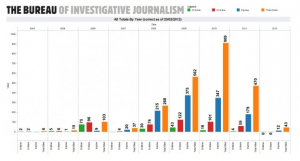[youtube]http://www.youtube.com/watch?v=ttImNNFgCDc[/youtube]
At his confirmation hearing yesterday before the Senate Foreign Relations Committee, John Kerry, who has been nominated by President Obama to be the next Secretary of State, engaged in nearly ten minutes of discussion with Senator Rand Paul (R-KY). Paul managed to come off as not nearly as batshit insane as he sounds while campaigning (although Kerry did have to say “let me finish” several times), and actually came very close to making a good and substantial point. While discussing the issue of providing arms to Egypt, Paul mentioned the long history of the US supporting and providing arms to a series of groups including the mujahideen and even Osama bin Laden. I say Paul came close to making a good point because this part of his commentary was framed around these groups coming back to pose a threat to Israel. Paul could have made a very important point had he framed the discussion as part of the bigger issue of the blowback when these groups, especially bin Laden, set their sites sights on the US after being funded by us as “the enemy of my enemy”. Kerry did a fine job of ending this part of the exchange, by stating that answer to the issue of arming various parties is to “make peace”.
In the final third of the video above, Paul moves to the question of relations with Pakistan. I didn’t get to watch the hearing live and haven’t yet found a transcript, but at least in the questions Paul had about Pakistan, I find myself wishing different questions had been asked. Regarding Pakistan, I would have asked Kerry if his idea of diplomacy is represented by his actions in the Raymond Davis affair, when Kerry went to Pakistan to lobby for Davis’ release and smuggled out of Pakistan the driver of the diplomatic vehicle that struck and killed a Pakistani civilian while attempting to rescue Davis from the site where he had shot and killed two Pakistanis. I also would have asked Kerry what steps he had taken personally to follow up on his pledge to Pakistan that Davis would be subject to a criminal investigation for the killings in Lahore.
Instead, Paul asked Kerry whether he would condition financial aid to Pakistan on the release of Dr. Shakeel Afridi. Neither Paul nor Kerry mentioned or condemned the vaccination ruse in which the CIA employed Afridi or the damage that ruse has done in terms of reduced polio vaccination rates and murdered health workers who were administering the polio vaccine. Instead, both lamented that someone who had helped the US to find bin Laden would find himself in jail. Kerry, however, stated that withholding aid would be the wrong approach. From the New York Times:
On Pakistan, Mr. Kerry said he had talked to Pakistani leaders about the Pakistani doctor who has been imprisoned for assisting the C.I.A.’s effort to track Osama bin Laden.
“That bothers every American,” said Mr. Kerry, who said that he was nonetheless opposed to cutting aid. “We need to build our relationship with the Pakistanis, not diminish it,” he said.
Dawn went into more detail on the exchange:
It was Senator Rand Paul, a new Republican face in the committee, who suggested cutting US aid to Pakistan “if they do not release Dr Shakil Afridi” who, he said, was imprisoned for helping the CIA in locating Osama bin Laden. The Al Qaeda leader was killed in a US military raid on his compound in Abbottabad on May 2, 2011.
Mr Kerry informed the senator that he had discussed this issue directly with President Asif Ali Zardari and Pakistan’s Army Chief Gen Ashfaq Pervez Kayani and like most Americans found it “incomprehensible if not repugnant, that somebody who helped us find Osama bin Laden is in jail in Pakistan”.
And “that bothers every American,” he added.
The senior US lawmaker, who stayed engaged with both Pakistan and Afghanistan as President Obama’s informal emissary during his first term, urged Senator Paul to also look at what the Pakistanis say.
“Pakistanis make the argument Dr Afridi did not know what he was doing, who he was specifically targeting … it was like a business for him,” he said, adding that this was no excuse for keeping the physician in jail.
But he said that he would stay engaged with Pakistan rather than resorting to “a pretty dramatic, draconian, sledge-hammer” approach of cutting US aid to the country Senator Paul had suggested.
This discussion by Paul and Kerry of Afridi is the first time in several weeks that Afridi’s name has resurfaced. I still think it likely that Afridi will disappear from the jail where he is now held. The only question is whether he will reappear in the US (where people like Rand Paul and Dana Rohrabacher will certainly want to take him on tour with them in a victory lap) or just disappear entirely.



